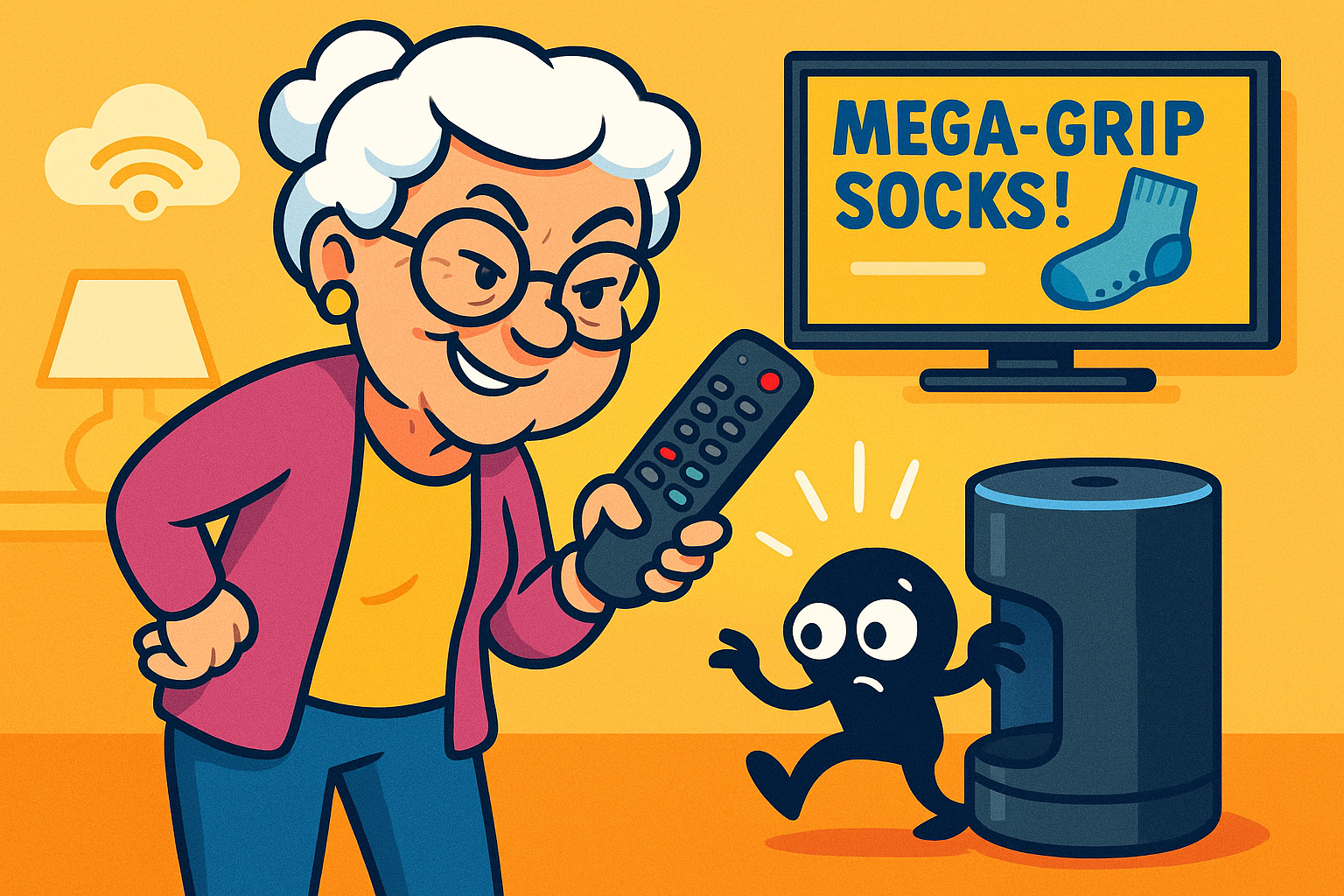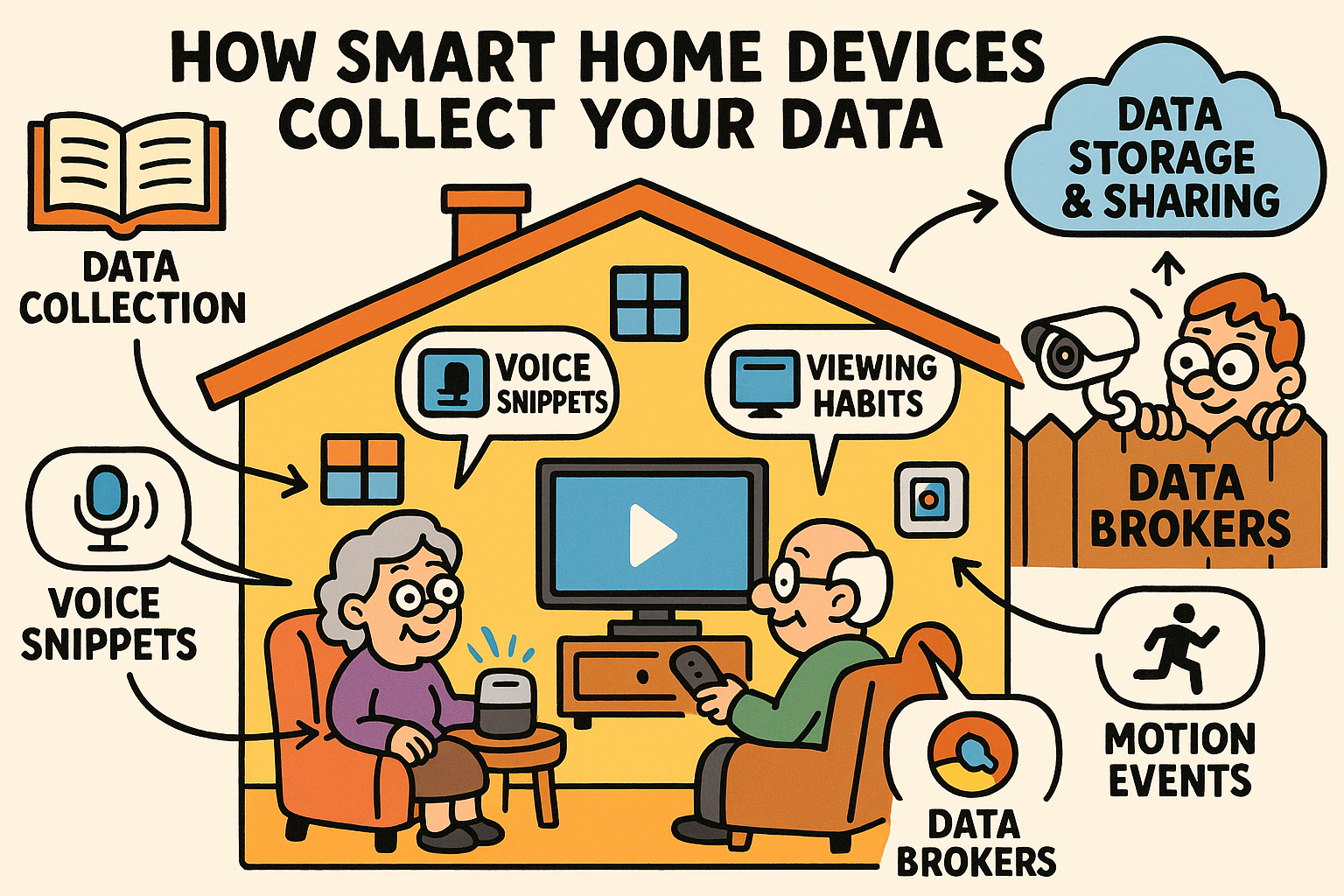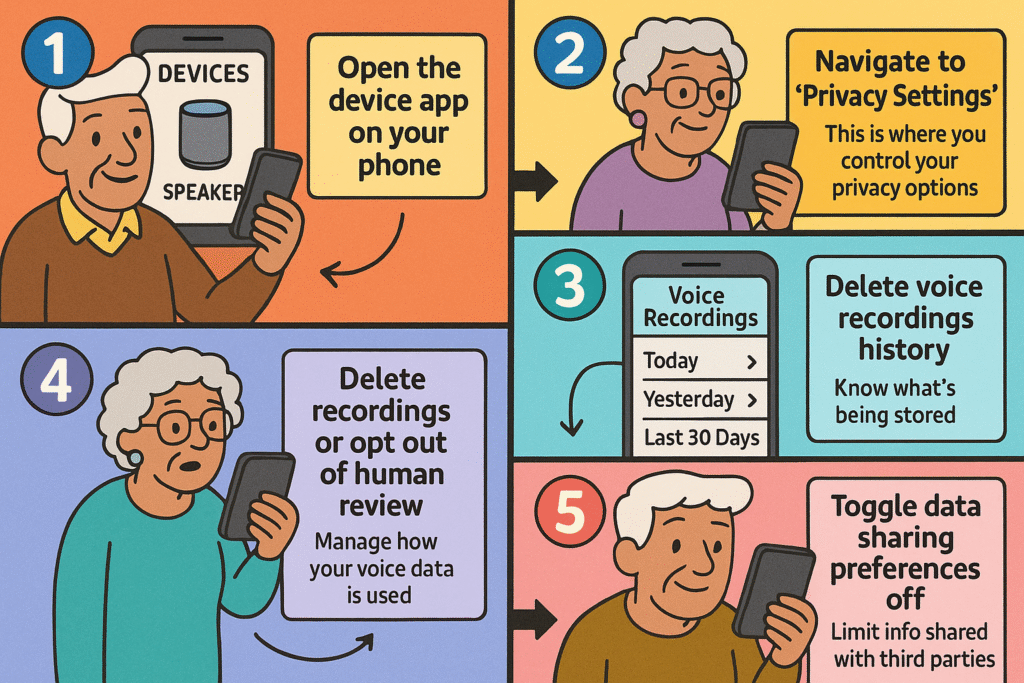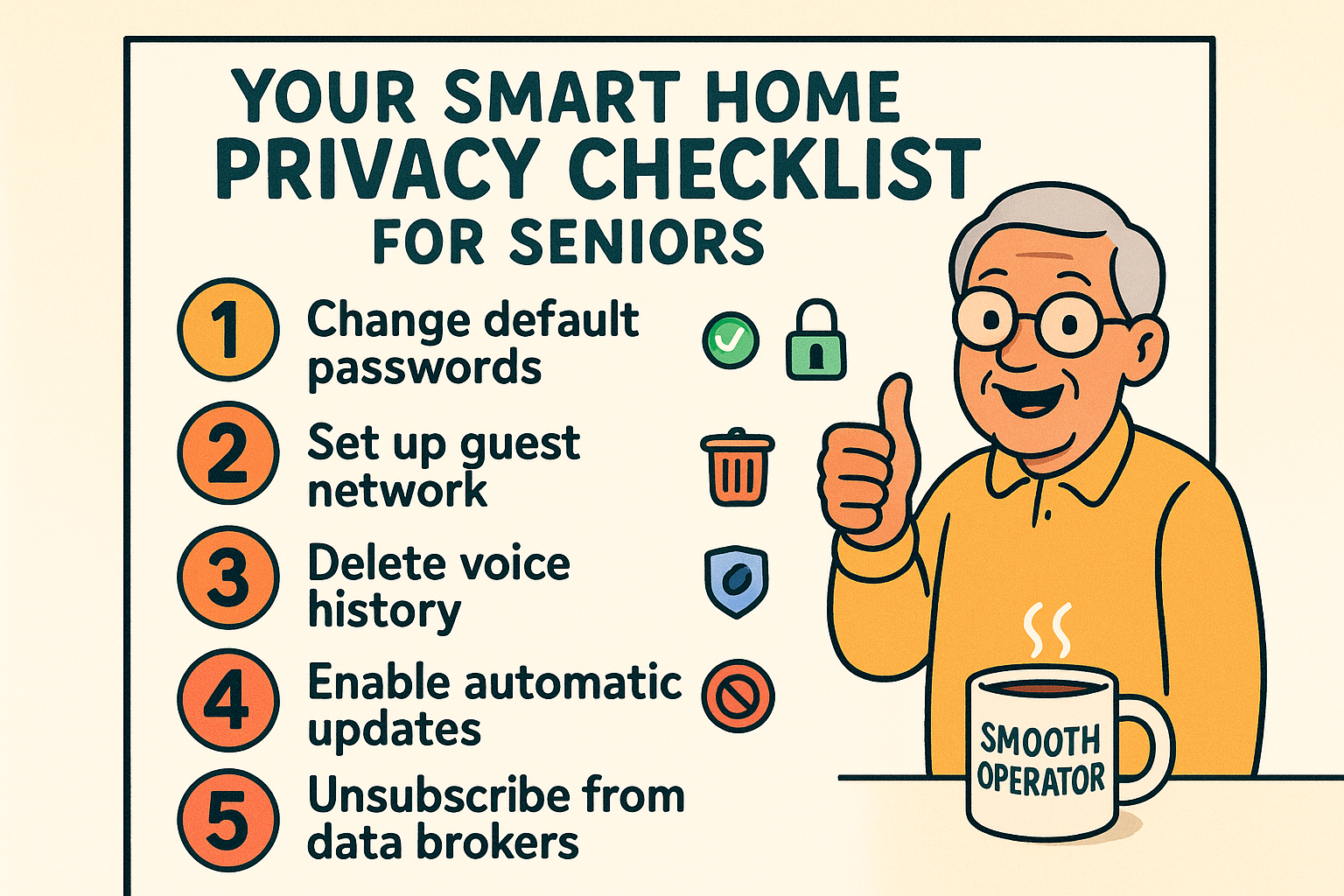
Newsletter Subscribe
Enter your email address below and subscribe to our newsletter

The other day, I was confiding in my golden retriever, Barnaby, about my creaky knee. Just a private, man-to-dog chat. Barnaby, by the way, is a top-notch listener but gives medical advice that mostly involves more treats and naps.
That night, I’m scrollingScrolling is what you do when you move up or down on a screen to see more of a webpage, email, or do... More on my tablet, and boom—an ad for “extra-strength, senior-friendly, miracle knee braces.”
Coincidence? Yeah, sure. And my toaster only makes toast instead of secretly plotting to sell my breakfast data to the highest bidder.

What’s really happening is those “helpful” smart gadgets around our homes—speakers, TVs, even that smug coffee maker that takes too long to heat up—are listening.
They’re like butlers who fetch your slippers but also eavesdrop on your gossip and then report back to Amazon.
The good news: you can set boundaries. You’re the boss, not Alexa. And you don’t need a PhD in computer wizardry to lay down the law. This guide will show you how to take control of AI safety in your home.
First things first, let’s pull back the curtain on “data collection.” It sounds ominous, like something out of a spy movie, but it’s often more mundane.
Think of it this way: for your smart speaker to answer your question, it has to hear the question, send it to a powerful computer brain in the cloud, figure out the answer, and send it back. That entire process involves collecting data.
Companies collect this information for a few reasons:
The most common worry is, “Is my smart speaker always listening to everything I say?” The short answer is no, not in the way you think.
It’s more like a well-trained dog waiting for its name. It’s perpetually listening for one thing: its “wake word,” like “Alexa,” “Hey Google,” or “Siri.” Only after it hears that magic word does it start recording your command to send it off for processing.
Still, that’s a lot of information about your daily life heading out of your home. The key is knowing what’s being shared and how to turn off the spigot.

Alright, let’s roll up our sleeves and check in on the most common digital inhabitants of our homes. Each one has its own little quirks and privacy settings you can easily adjust.
These are often our main concern because they deal with our voices. What you ask your speaker is recorded and saved, partly to help it learn your accent and partly to build a profile of your interests.
Want to see what it’s been hearing? You can. And you can delete it, too.
More > Settings > Alexa Privacy > Review Voice History. Here you can see and delete recordings one by one or all at once.My Activity. This will show you a history of your commands that you can review and delete.Pro Tip: In those same privacy settings, you can also opt out of having your voice recordings used to “help improve services.” This often means preventing human employees from listening to a small, anonymized fraction of clips.

Take charge of your smart device’s data: follow these easy steps to review and delete your voice recordings, and adjust privacy settings to protect your personal information.
Your new TV might have a feature with a fancy name like “Viewing Information Services” or “SyncPlus,” but its real name is Automatic Content Recognition (ACR).
ACR is like a nosy movie buddy. It takes constant little “screenshots” of what you’re watching—whether it’s from cable, a streaming app, or even a DVD—to identify your viewing habits. This data is incredibly valuable and is often sold to advertisers and data brokers.
The good news is you can (and should) turn it off. The setting is usually buried deep in the menus. Grab your remote and look for settings related to “Privacy,” “Terms and Policies,” or “Viewing Data.”
Settings > Privacy > Smart TV Experience and uncheck the boxes.Settings > Support > Terms & Policies and disable “Viewing Information Services.”Settings > All Settings > General > Live Plus and turn it off.The rule of thumb is simple: if it connects to the internet, it has settings you should check. Y
our smart thermostat knows when you’re home and away. Your video doorbell records clips of motion.
Take five minutes with any new device to poke around its app and look for a “Privacy” or “Data Sharing” section. You’ll often be surprised what you can control.
Managing individual devices is great, but you can also improve your home’s overall digital security with a couple of easy moves.
Your Wi-Fi router is the gatekeeper for all the internet traffic in your home. Most modern routers have a feature called a “Guest Network.” Think of it as a separate, less-trusted entrance for your smart devices.
Setting this up keeps your main network—the one your computer and phone are on—safer.
Plus, always make sure your main Wi-Fi password is strong and not just “password123.” These practices are part of a broader strategy for online safety that protects you everywhere.
We mentioned data brokers earlier. These are companies that build profiles about you from various sources—your TV habits, public records, your online shopping—and sell them.
While it’s a more advanced step, you can request that these companies delete your data. It’s a bit like getting off a junk mail list, but for the digital age.
The good news is, you can fight back. Here’s how:
Feeling a little overwhelmed? Don’t be. Just tackling one or two of these things makes a big difference. Here’s a simple checklist to get you started.

Here are some additional tips:
“Spying” implies secret, malicious intent. It’s more accurate to say they are collecting data as part of their design. They are upfront about it (in those long legal agreements nobody reads), and crucially, they give you the tools to manage it. You’re not being spied on; you’re just a customer whose settings need a little tune-up.
That’s the million-dollar question! It’s a trade-off between convenience and privacy. Asking your speaker to play music while your hands are covered in flour is wonderfully convenient. The key is to find a balance you’re comfortable with. By following the steps above, you can enjoy the benefits while minimizing the data sharing. It’s all about weighing the convenience and benefits of modern gadgets against your personal comfort level.
Absolutely not! If you can use a smartphone, you can do this. Companies have made these settings much more accessible over the years. It’s usually just a matter of tapping through a few menus. You can’t break anything, so don’t be afraid to poke around.
Your home is your sanctuary, and you deserve to feel comfortable and in control—both in the physical and digital sense.
These smart devices are designed to serve you, not the other way around. By taking a few simple steps, you can set boundaries and ensure your helpful butler doesn’t become a nosy gossip.
Technology should make our lives easier and more fun, not more worrisome. As you get more comfortable, you’ll find that you hold all the keys. To continue learning, feel free to explore more tips and tutorials at Senior Tech Cafe.